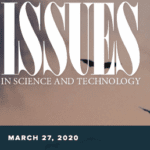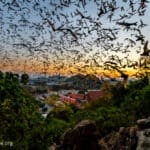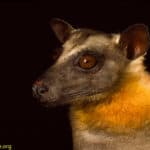Such diseases are also often mentioned as though they are widespread, without admitting that they (excluding COVID-19, of course) are rare or limited to specific geographic areas. Nevertheless, bats still have one of our planet’s finest records of living safely with humans.
For anyone who simply doesn’t handle bats, the risk of contracting a disease from one is extremely remote.
Please use these resources and citations to share the truth about bats as safe and valuable neighbors.
(Last updated January 2022)
Bats and Disease Facts
- Bats harbor no more viruses than other animals1.
- Claims of disease from bats are often based on poorly supported speculation2,3.
- Reports of 96% genomic similarity between viruses are misleading without proper perspective. We are at least that related to chimpanzees but remain vastly different4.
- Promises to predict future pandemics are misdirecting billions of dollars to virus hunting that is biased against bats and could be better invested in other public health priorities5,6,7.
- Bats have an undeniable history of living with humans without causing disease outbreaks8.
- There is a long history of exceptionally harmful disease exaggerations against bats9.
- Fear of bats leads to intolerance and killing9,10 .
- Asking people to conserve bats because they are beneficial, while failing to counter exaggerated fear, is unlikely to improve conservation success10.
- There are no confirmed cases of SARS-CoV-2 transmission from bats to humans11.
- SARS, MERS, SARS-CoV-2, and Ebola have not been isolated in a bat, nor proven to be transmitted from a bat to a human, despite frequent speculation and intense searching12,13,14,15,16.
Merlin’s op-ed, “A Viral Witch Hunt,” published in Issues in Science and Technology on March 27, 2020 illustrates how misguided focus on bats as speculated sources of scary diseases threatens an invaluable resource and leads to misdirection of public health resources. Continue reading
Merlin’s Opinion Letter, “Fear of Bats and its Consequences,” was published in the Journal of Bat Research and Conservation. This is a thoroughly documented report on how exaggerated disease claims against bats have harmed bats and efforts to conserve them over the past 47 years—something all who care about bats should know. Continue reading
Read Merlin’s article, Give Bats a Break, in the Spring 2017 edition of Issues in Science and Technology. This report is based on Merlin’s review of thousands of scientific papers and popular media stories. Continue reading
Wrong approaches in defense of bats can be even worse than not defending them at all. As experience has shown, despite good intentions, nothing can threaten bats more than fear. Continue reading
Millions of tourists have watched free-tailed bat emergences from the Congress Avenue Bridge in Austin, Texas over the past 35 years without anyone ever having been harmed. Signs warn visitors not to handle the bats. Continue reading
Merlin has been sharing the truth about Ebola for years through responses to exaggerated claims blaming bats for Ebola outbreaks. Continuing to claim bats as the source is likely to reverse conservation progress essential to ecosystem health and delay successful Ebola prevention. Understanding the true source is essential. Continue reading

We are happy to share this response to the Nipah headlines that have been frightening people of bats worldwide. Author Haritha John reached out to MTBC for help and has done an excellent job of presenting the facts Merlin was able to supply based on a review of current scientific knowledge. Continue reading
July 2017 saw a virtual explosion of premature speculation presented as though it was proven fact, much of it traceable to a single article titled, “Bats are global reservoir for deadly coronaviruses,” that appeared in the June 14, 2017 issue of Nature. Many media stories now claim bats to be the primary source of so-called “emerging infectious diseases” like Ebola, though most of these speculations remain unproven. Continue reading
When it comes to defending bats against falsely positive stories, no one is working harder or accomplishing more. Continue reading
References
- Mollentze, N. & Streicker, D. G. Viral zoonotic risk is homogenous among taxonomic orders of mammalian and avian reservoir hosts. Proceedings of the National Academy of Sciences of the United States of America (2020) doi:10.1073/pnas.1919176117.
- Wenzel, J. Origins of SARS‐CoV‐1 and SARS‐CoV‐2 are often poorly explored in leading publications. Cladistics cla.12425 (2020) doi:10.1111/cla.12425.
- Puechmaille, S. J. et al. Misconceptions and misinformation about bats and viruses. International Journal of Infectious Diseases (2021) doi:10.1016/j.ijid.2021.02.097.
- Mikkelsen, T. S. et al. Initial sequence of the chimpanzee genome and comparison with the human genome. Nature 437, 69–87 (2005).
- Holmes, E. C., Rambaut, A. & Andersen, K. G. Pandemics: Spend on surveillance, not prediction. Nature 558, 180–182 (2018).
- Zhang, Y.-Z. & Holmes, E. C. A Genomic Perspective on the Origin and Emergence of SARS-CoV-2. Cell (2020) doi:10.1016/j.cell.2020.03.035.
- Tuttle, M. D. A Viral Witch Hunt. Issues in Science and Technology https://issues.org/a-viral-witch-hunt-bats/ (2020).
- Tuttle, M. D. Threats to bats and educational challenges. in Bat Evolution, Ecology, and Conservation 363–391 (2013). doi:10.1007/978-1-4614-7397-8_18.
- Tuttle, M. D. Fear of Bats and its Consequences. Journal of Bat Research & Conservation 10, (2017).
- Lu, M. et al. Does public fear that bats spread COVID-19 jeopardize bat conservation? Biological Conservation 108952 (2021) doi:10.1016/j.biocon.2021.108952.
- do Vale, B. et al. Bats, pangolins, minks and other animals – villains or victims of SARS-CoV-2? Veterinary Research Communications vol. 45 1–19 (2021).
- Racey, P. A., Fenton, B., Mubareka, S., Simmons, N. & Tuttle, M. D. Don’t misrepresent link between bats and SARS. Nature vol. 553 281 (2018).
- Azhar, E. I. et al. Evidence for Camel-to-Human Transmission of MERS Coronavirus. New England Journal of Medicine 370, 2499–2505 (2014).
- Xiao, K. et al. Isolation and characterization of 2019-nCoV-like coronavirus from malayan pangolins. bioRxiv 2020.02.17.951335 (2020) doi:10.1101/2020.02.17.951335.
- Kock, R. A. et al. Searching for the source of Ebola: the elusive factors driving its spillover into humans during the West African outbreak of 2013-2016. Rev. Sci. Tech. Off. Int. Epiz vol. 38 http://researchonline.rvc.ac.uk/id/eprint/12250/ (2019).
- Kupferschmidt, K. New Ebola outbreak likely sparked by a person infected 5 years ago. Science (2021) doi:10.1126/science.abi4876.







